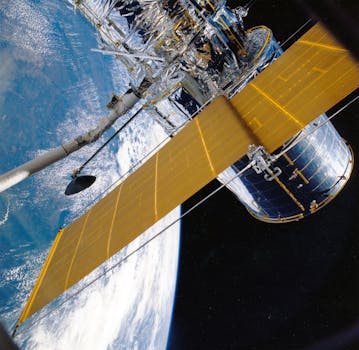GEO Satellites: Understanding the Technology and Applications of Geostationary Orbit Satellites

GEO Satellites: Understanding the Technology and Applications of Geostationary Orbit Satellites
GEO satellites, short for Geostationary Orbit satellites, are a type of satellite that orbits the Earth at an altitude of approximately 36,000 kilometers above the equator. At this altitude, the satellite’s orbital period matches the Earth’s rotational period, allowing it to remain stationary in the sky relative to a fixed point on the Earth’s surface. This unique characteristic makes GEO satellites ideal for a variety of applications, including telecommunications, navigation, and weather forecasting.
History of GEO Satellites
The concept of GEO satellites was first proposed by scientist Arthur C. Clarke in 1945. However, it wasn’t until the 1960s that the first GEO satellite, Syncom 2, was launched. Since then, numerous GEO satellites have been launched, providing a range of services including television broadcasting, telecommunications, and navigation. Today, there are over 500 GEO satellites in orbit, with many more planned for launch in the coming years.
Technology and Applications of GEO Satellites
GEO satellites use a range of technologies to provide their services. These include transponders, which receive and retransmit signals; antennas, which transmit and receive signals; and solar panels, which provide power to the satellite. GEO satellites also use a variety of propulsion systems, including ion engines and Hall effect thrusters, to maintain their position in orbit. In terms of applications, GEO satellites are used for a variety of purposes, including telecommunications, navigation, weather forecasting, and Earth observation. They are also used for military and government applications, such as communications and reconnaissance.
Advantages and Disadvantages of GEO Satellites
GEO satellites have several advantages, including their ability to provide continuous coverage of a fixed point on the Earth’s surface. They also have a high signal strength, making them ideal for applications such as television broadcasting. However, GEO satellites also have some disadvantages. For example, they are relatively expensive to launch and maintain, and they can be affected by space debris and other forms of interference. Additionally, GEO satellites have a limited lifespan, typically ranging from 10 to 15 years, after which they must be replaced.
Future of GEO Satellites
Despite the challenges facing GEO satellites, they are likely to continue playing a crucial role in modern telecommunications and other applications. Advances in technology, such as the development of more efficient propulsion systems and more powerful transponders, are expected to improve the performance and lifespan of GEO satellites. Additionally, the growing demand for telecommunications and other services is expected to drive the launch of new GEO satellites in the coming years. As the technology continues to evolve, we can expect to see new and innovative applications of GEO satellites, including the use of constellations of small satellites to provide global coverage and the development of new types of satellites, such as medium Earth orbit (MEO) satellites.



